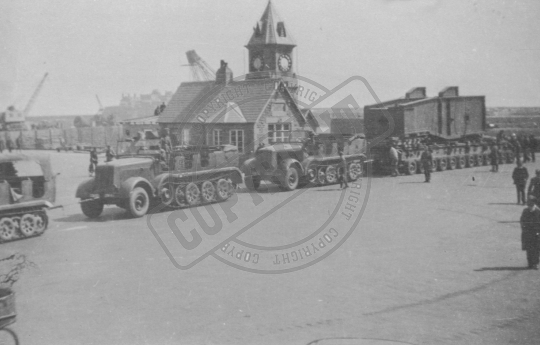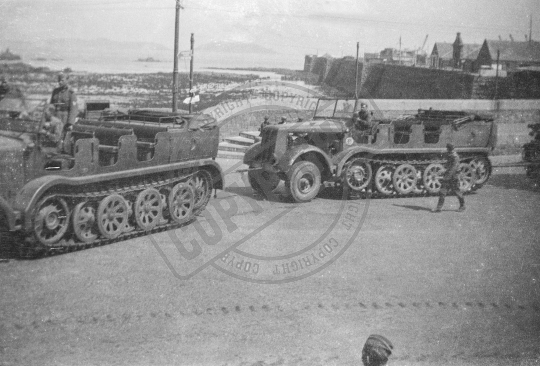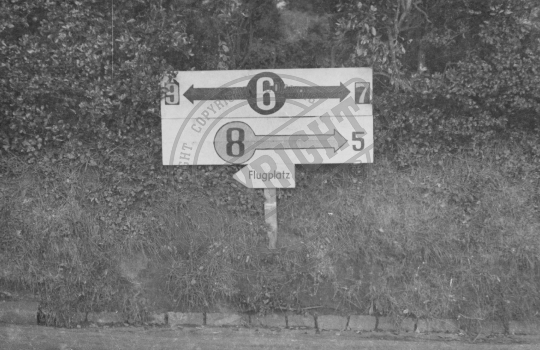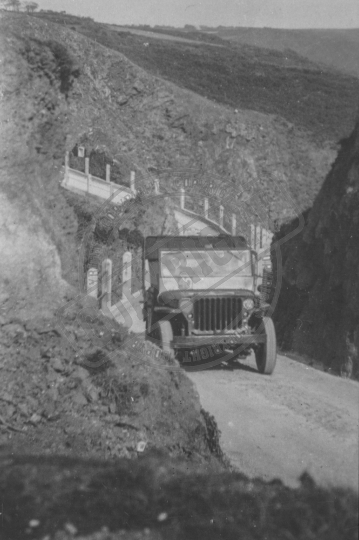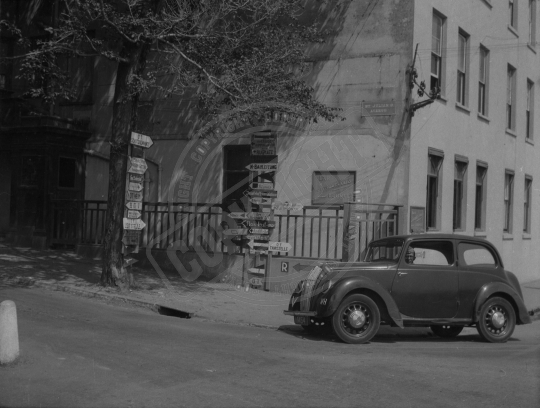Military (9)
TPL_00382
German half-tracks were linked together and used to transport heavy loads such as the guns of Batterie Mirus. Seen here is one of the huge carriages that will eventually mount the 30.5cm gun barrel sitting on a 24 wheeled trailer being towed past the White Rock weighbridge.
TPL_00381
German half-tracks were linked together and used to transport heavy loads such as the guns of Batterie Mirus. Seen here are at least three vehicles having exited the White Rock turning to ascend St Julians Avenue. Note the damage to the road surface in the forground.
TPL_00380
Heavy construction equipment was used during the building of the fortifications, this crane with fitted with a grab was used during the excavation process. Photographed at the top of the slipway next to the Albert statue, note the road sign painted at the foot of the wall and the 'Antee’ floating crane seen in the background.
TPL_00378
German road sign at Forest Road which makes the junction near La Villette in St Martins. The Germans listed the local roads by colour and number, here we see red route 6 leading on to routes 7 and 9. This junction also leads from yellow 8 to yellow 5. The small sign reading Flugplatz is indicating the direction to the airfield.
TPL_00328
A Guernsey police officer and German chauffeur stand by the Commandants car while he pays a visit to the Little Chapel at Les Vauxbelets, Guernsey.
TPL_00326
French Char bis B1 tanks used by the Germans awaiting shipment from Millbrook, Jersey to France 29th May 1945.
TPL_00322
As the military buildup increased, so did the number of road signs directing German forces to them. Many roads were thoroughly signposted like this example at the bottom of St Julian's Avenue, Guernsey. Note the Guernsey Press Censor in his car.




